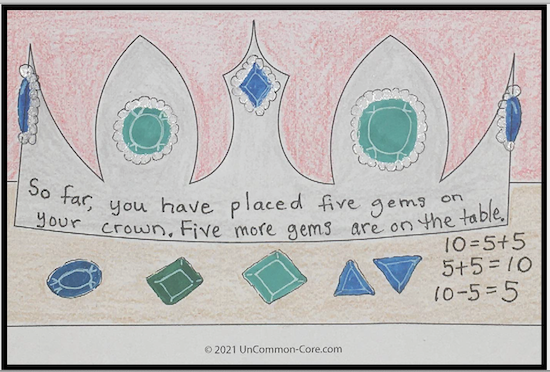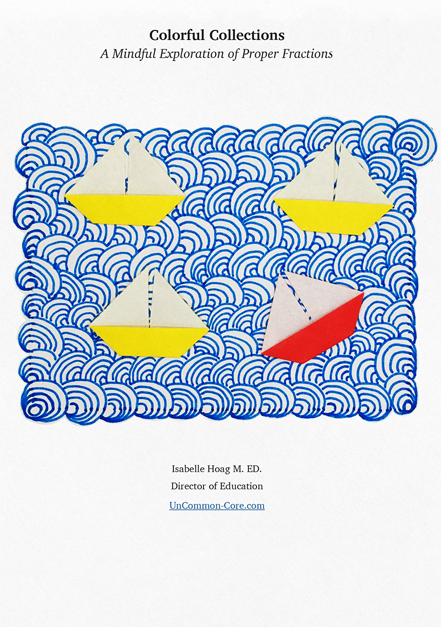
When students see concrete examples that illustrate a number sentence, they are more likely to understand what the fact means, when to use that math fact, and how the mathematical symbols express the fact.
Teachers have used numbers for so long we often forget how abstract they are from a young person’s point of view. Using concrete examples helps students focus on what is important and recall the math facts or number bonds later.
Manipulatives Grab Students’ Attention
Modeling each math fact with stickers, stamps, dazzling jewels (or pretend jewels depending on your budget), stickers, centimeter cubes, tally marks, or number lines provides context which adds meaning to math facts and shows how the abstract ideas translate to real objects.
Using concrete examples shows students that addition, subtraction, multiplication, and division are processes that combine – or separate – groups of objects in predictable ways. Real life examples help them learn that seven plus eight is always fifteen. One common misconception than young children have is that there are more bigger items just because of their size. (Never thought I would use ‘more bigger’ in a sentence, but there you are.)
Children often conflate the size of objects with the number of objects. They need real world examples over a long period of time in order to understand that size and amount are different characteristics.
If you start with a group of seven very large boulders, combine them with another group of eight large boulders and count them, there will be fifteen. There won’t be more boulders due to their large size.
Likewise, seven tiny grains of sand added together with eight tiny grains of sand will be fifteen grains of sand. There will never be fewer grains of sand just because of their small size.
Providing many experiences with concrete examples of the math facts is the best way to teach your students that the facts are actually independent of the objects being used to demonstrate them.
Concrete Examples Enhance Your Students’ Number Sense
Students who model a variety of math facts with all kinds of different manipulatives gain the experience necessary to understand that the order of addends doesn’t impact the sum. They will see that the order of factors doesn’t change the product. They will also see that the order of numbers in subtraction and division problems matters a great deal.
Experience with loads of concrete examples in math is needed to help your students generalize the information they are learning. Students use their experiences as evidence to support big ideas and important mathematical concepts.
Share This Story, Choose Your Platform!
Download Colorful Collections:
A Mindful Exploration of Proper Fractions
Help your students make sense of fractions.
I started teaching in 1987, which means I’ve collected many tips and tricks along the way. In this ebook, I share concepts, strategies, and classroom materials to help you make math sticky.
Along with this useful ebook, you will receive weekly emails from StickyMath@UnCommon-Core.com. I send information like: teacher tips, educational ideas, book reviews, curated lists, reviews of educational sites, and free first drafts of products that I’m creating for my TPT store. That way, you get helpful ideas and free stuff, while I get some feedback before I finalize products and put them up for sale.
I value your privacy. I will never sell your information. You may unsubscribe at any time.
All the best!
Isabelle
Isabelle Hoag M. Ed.

